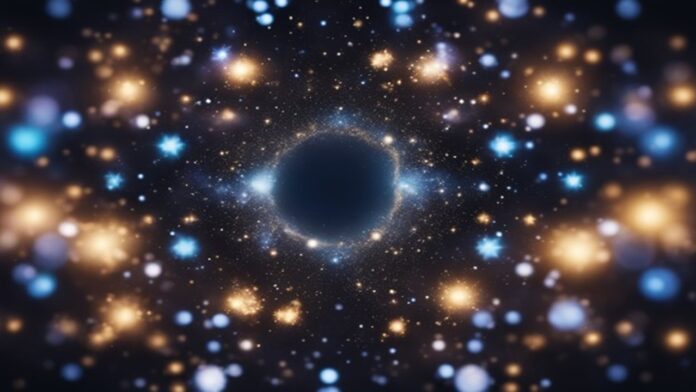
In the grand scheme of things, a billion years is just a drop in the bucket. But what about a trillion years? Or a quadrillion? What will happen in a quintillion or nonillion years? What will happen in googol years from now?
These are the kinds of questions that scientists and astronomers ask themselves when they think about the future of the universe.
The universe is constantly changing and evolving, and it’s impossible to predict exactly what will happen in such a distant future.
However, based on our current understanding of physics and astronomy, scientists have made some educated guesses about what the universe might look like in the next few billion, trillion, or even nonillion (1 with 30 zeroes) years.
From the fate of the stars to the ultimate fate of the universe itself, there are many interesting possibilities and questions to consider.
We already answered some questions in our articles: “What Will Earth Look Like in 1 Million Years” or What Will Earth Look Like In 1 Billion Years?
Now we would like to expand those questions to perhaps some ridiculous numbers.
So, let’s first start by describing some of these numbers.
For example, in the table below we have the naming of numbers starting from one all up to 1 followed by 50 zeroes.
| Number Name | Number of Zeroes |
| One | 0 |
| Ten | 1 |
| Hundred | 2 |
| Thousand | 3 |
| Ten Thousand | 4 |
| Hundred Thousand | 5 |
| Million | 6 |
| Ten Million | 7 |
| Hundred Million | 8 |
| Billion | 9 |
| Ten Billion | 10 |
| Hundred Billion | 11 |
| Trillion | 12 |
| Ten Trillion | 13 |
| Hundred Trillion | 14 |
| Quadrillion | 15 |
| Ten Quadrillion | 16 |
| Hundred Quadrillion | 17 |
| Quintillion | 18 |
| Ten Quintillion | 19 |
| Hundred Quintillion | 20 |
| Sextillion | 21 |
| Ten Sextillion | 22 |
| Hundred Sextillion | 23 |
| Septillion | 24 |
| Ten Septillion | 25 |
| Hundred Septillion | 26 |
| Octillion | 27 |
| Ten Octillion | 28 |
| Hundred Octillion | 29 |
| Nonillion | 30 |
| Ten Nonillion | 31 |
| Hundred Nonillion | 32 |
| Decillion | 33 |
| Ten Decillion | 34 |
| Hundred Decillion | 35 |
| Undecillion | 36 |
| Ten Undecillion | 37 |
| Hundred Undecillion | 38 |
| Duodecillion | 39 |
| Ten Duodecillion | 40 |
| Hundred Duodecillion | 41 |
| Tredecillion | 42 |
| Ten Tredecillion | 43 |
| Hundred Tredecillion | 44 |
| Quattuordecillion | 45 |
| Ten Quattuordecillion | 46 |
| Hundred Quattuordecillion | 47 |
| Quindecillion | 48 |
| Ten Quindecillion | 49 |
| Hundred Quindecillion | 50 |
Okay, but what about the number in the title of the article?
Let’s explore more.
What is Number 1000000000000000000000000000000?
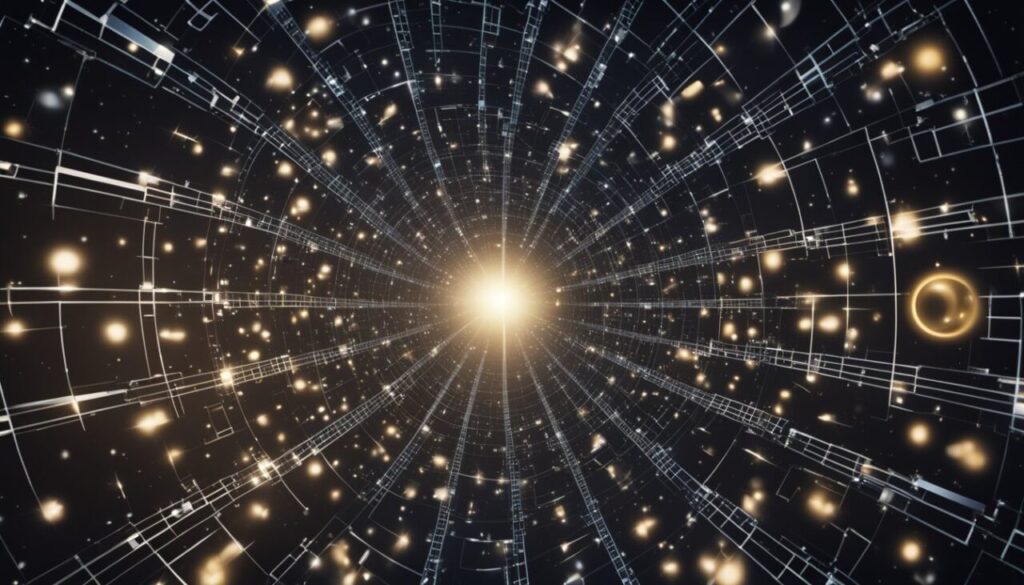
In mathematics, the number 1000000000000000000000000000000 represents a one followed by 30 zeros.
Depending on the naming system it is called either quintillion (long scale) or nonillion (short scale).
To put this number into perspective, it is a quintillion times larger than a trillion, which is already an extremely massive number.
It is rather difficult for the human mind to even comprehend such a large number, but it is actually used in various scientific fields to represent astronomical distances, masses, and time scales.
In terms of time, 1000000000000000000000000000000 years is an incomprehensible amount of time. It is estimated that the universe is approximately 13.8 billion years old, which is only a fraction of this huge number.
And so, the question remains – is this the largest number in the world?
Biggest Number In The World?

Currently, the largest named number is a googolplex, which is a 10 raised to the power of the googol number. In other words, a googolplex is written as 10^(10^100), or 1 followed by a googol (10^100) zeros.
This number is so large that it is impossible to write out in full, and even trying to represent it using scientific notation would require a number of digits that is larger than the number of atoms in the observable universe.
Namely, the observable universe is estimated to contain around 10^80 atoms.
In contrast, a googolplex is incomprehensibly larger than that number.
In fact, a googolplex is so large that it far surpasses any meaningful comparison to the number of atoms in the observable universe.
Basically, it can not be even described with words.
And so, this leads us to the most important question – is this number (nonillion, googol or gogloplex), large enough to represent the end of the universe?
Let’s see….
When Will the Universe End?
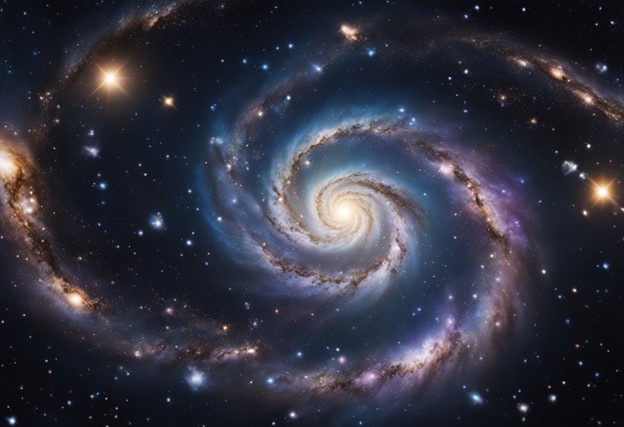
There are several theories that predict the end of the universe, but none of them can be confirmed with certainty. Here are some of the most popular ones:
- The Big Freeze: This theory suggests that the universe will continue to expand and eventually reach a state of maximum entropy, where all matter is evenly distributed and the universe becomes cold and dark. This is estimated to occur in about 10^100 years (googol number).
- The Big Rip: This theory suggests that the expansion of the universe will continue to accelerate, eventually tearing apart all matter, including atoms and subatomic particles. This is estimated to occur in about 22 billion years and it’s the earliest possible end of the universe.
- The Big Crunch: This theory suggests that the universe will eventually stop expanding and begin to contract, eventually collapsing in on itself in a massive implosion. This is estimated to occur in about 100 billion years.
- Vacuum Decay: This theory suggests that the universe is currently in a false vacuum state, and that at some point it will transition to a true vacuum state, which could cause the collapse of all matter.
Okay, so now that we have all BIG numbers and BIG theories in one place, let’s see what will happen with the universe in a simple step-by-step bulleting format.
The Far Future
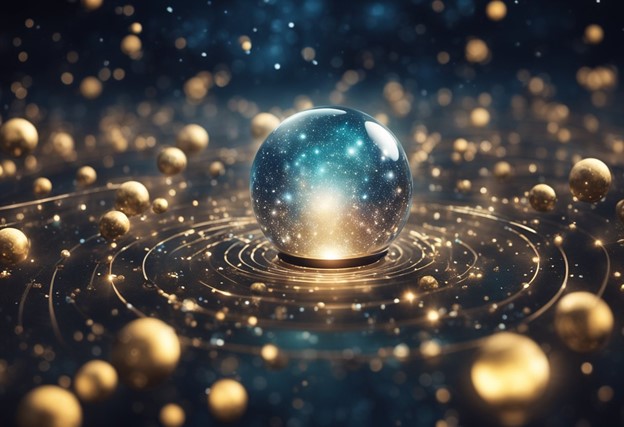
Here are a few predictions for what may happen in the next 10^100 years.
Have in mind that many of these predictions are pure speculations:
- One Trillion Years (10^12):
- Star formation slows down.
- Stellar remnants dominate, including white dwarfs, neutron stars, and black holes.
- One Quadrillion Years (10^15):
- Degenerate era begins.
- Black hole mergers and growth continue.
- One Quintillion Years (10^18):
- Black hole domination increases.
- Dark energy’s impact on cosmic expansion grows.
- One Septillion Years (10^24):
- Stelliferous era ends, with stars exhausted.
- The universe evolves towards maximum entropy.
- One Nonillion Years (10^30):
- The universe approaches maximum entropy.
- Theoretical proton decay may disintegrate matter.
- Ten Decillion Years (10^33):
- Black holes continue to merge and dominate structures.
- Undecillion Years (10^36):
- Proton decay may become likely, leading to the disintegration of all matter.
- End of stellar remnants like white dwarfs and neutron stars.
- Tredecillion Years (10^39):
- The Black Hole Era; the universe is dominated by massive black holes.
- Highly speculative; stretching the limits of scientific predictions.
- Quinvigintillion Years (10^75): Hawking radiation killed off even the supermassive blackholes.
- Googol Years (10^100):
- End of universe? Extreme extrapolations and uncertainties abound. Google takes over the universe (just kidding 😊…)
Now, those are some interesting numbers, huh?
As mentioned, attempting to make any predictions about such a distant future is akin to a mission impossible.
Nevertheless, it is intriguing to contemplate what might occur, particularly considering that the existing laws of physics will no longer apply.
And so, let’s take this even further. Let’s explore some of those predictions in more detail, starting with predictions about galaxies.
Galactic Changes
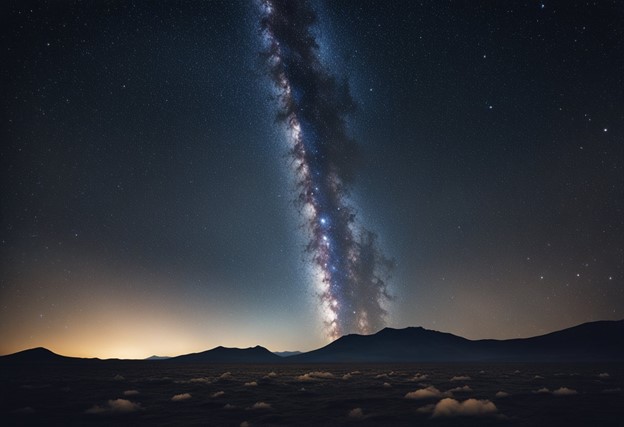
Galaxy Collisions
One of the most dramatic changes that will happen fairly soon (compared to the numbers we’re using in this article) will be the collision of galaxies As our own Milky Way is on a course for a collision with the Andromeda Galaxy, astronomers predict that this cosmic event will reshape both galaxies in ways we can only begin to fathom. In the coming years, studies will shed light on the dynamics of this interaction, helping us understand what to expect in 2029 and beyond. These encounters will not only alter the structure of the galaxies involved but could also give birth to new stars in the process.
Namely, over time, gravitational forces will cause galaxies to merge, resulting in the creation of new, larger galaxies. These galactic collisions will be a common occurrence, and it is estimated that the Milky Way will merge with its neighboring galaxy, Andromeda, in approximately 4.5 billion years.
And so, as galaxies collide, their stars will be thrown into new orbits, and some may even be ejected from the galaxy altogether.
This will result in the formation of new star clusters, and the destruction of others. The collision of galaxies will also fuel the supermassive black holes at the centers of each galaxy.
Black Hole Mergers
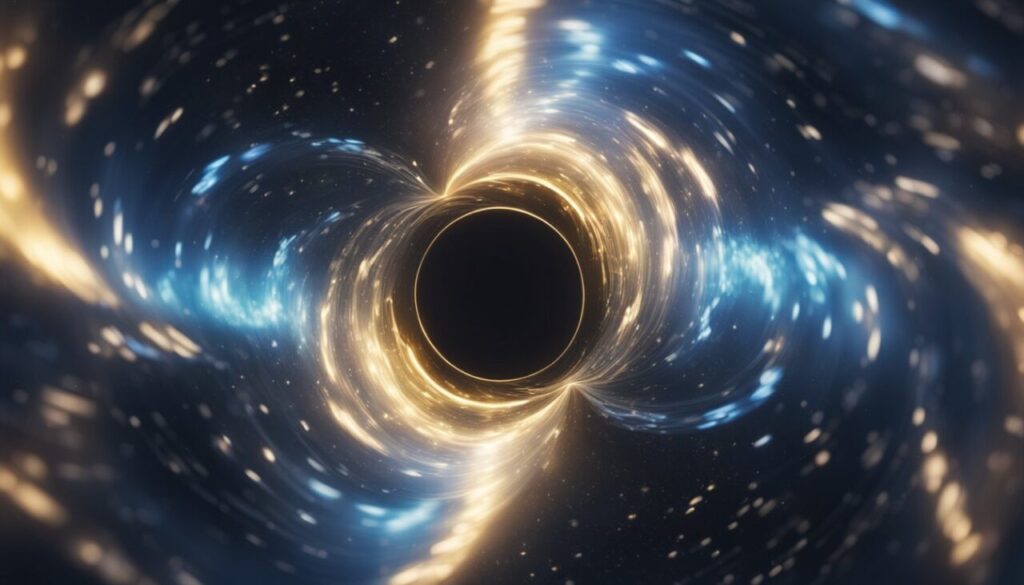
Black holes are some of the most mysterious and powerful objects in the universe. In the very distant future, the universe will be filled with countless black holes, ranging in size from a few solar masses to billions of solar masses.
Over time, these black holes will merge together, creating even larger and more massive black holes.
As black holes merge, they release vast amounts of energy in the form of gravitational waves. These waves ripple through the fabric of spacetime and can be detected by advanced gravitational wave observatories.
The merging of black holes will be a common occurrence in the distant future and will play a key role in shaping the structure of the universe.
That brings us to the overall expansion of the universe.
Universe’s Expansion
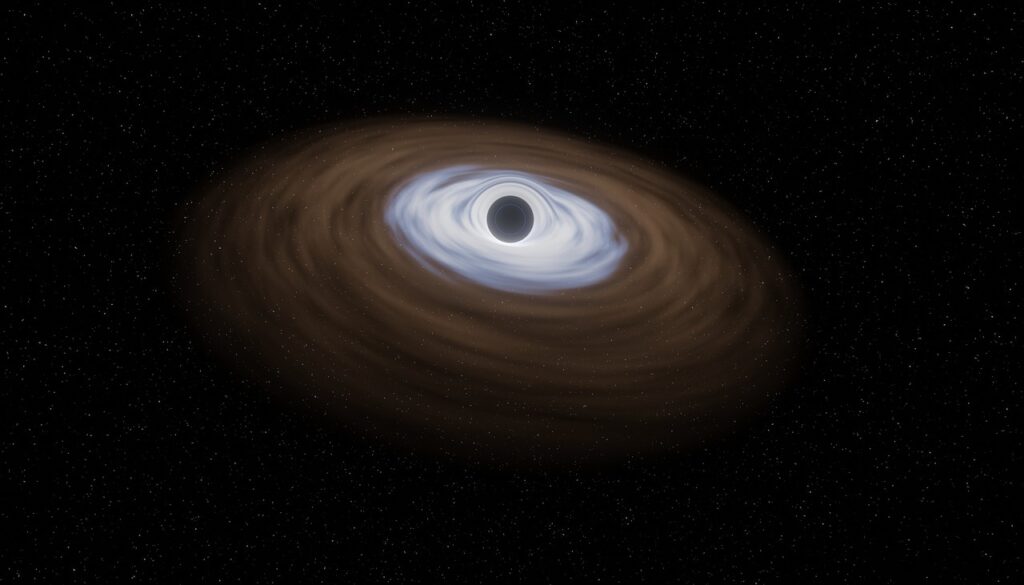
Dark Energy Dominance
In 1000000000000000000000000000000 years, the universe’s expansion will continue to accelerate due to the dominance of dark energy.
Dark energy is a mysterious force that makes up approximately 68% of the universe. Its presence is indirect from the observed acceleration of the universe’s expansion.
As the universe continues to expand, the distance between galaxies will increase. Over time, the expansion will become so rapid that galaxies will no longer be visible to each other. Eventually, even clusters of galaxies will be torn apart by the expansion.
And so, the fate of the universe is dependent on the nature of dark energy. If dark energy remains constant or weakens, the universe may continue to expand indefinitely.
However, if dark energy becomes stronger over time, it could lead to a “Big Rip” scenario in which the expansion becomes so rapid that even atoms are torn apart.
Proton Decay
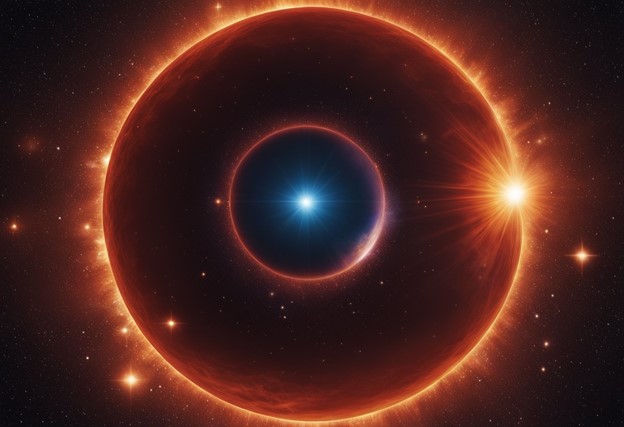
In decillion years (10^33, 10^34 ) years, it is theorized that all protons in the universe will decay. This process is known as proton decay and is very important event in the long-term future of the universe.
Matter Instability
Proton decay is a consequence of the instability of matter at the most fundamental level. The decay of protons would result in the destabilization of all atomic matter, leading to the eventual collapse of all structures in the universe.
Scientists have been searching for evidence of proton decay for decades, but it has yet to be observed.
However, the theory of proton decay is widely accepted in the scientific community, and many experiments are still being conducted to detect it.
And so, this leads us to the final two chapters of expanding universe: the black hole era and dark era!
Black Hole Era

In the Black Hole Era, which is estimated to occur in about 10^40 years, black holes will be the only remaining celestial objects. However, black holes are not eternal, and they will eventually evaporate due to a phenomenon known as Hawking radiation.
Hawking radiation is a theoretical process proposed by physicist Stephen Hawking in 1974.
According to this theory, black holes emit radiation due to quantum effects near the event horizon, which causes the black hole to gradually lose mass and energy until it disappears/evaporate completely.
Black Hole Evaporation
However, the evaporation process is incredibly slow, and it will take an unimaginably long time for even the smallest black holes to evaporate completely.
The rate of evaporation depends on the mass of the black hole, with smaller black holes evaporating faster than larger ones. A black hole with the mass of the Sun would take about 10^67 years to evaporate completely, while a supermassive black hole with a mass of a billion Suns would take about 10^100 years.
In the distant future, black holes will be the only remaining objects in the universe, emitting Hawking radiation and slowly evaporating over trillions of years.
This era will mark the end of the universe as we know it, leaving behind only a vast expanse of empty space.
Dark Era
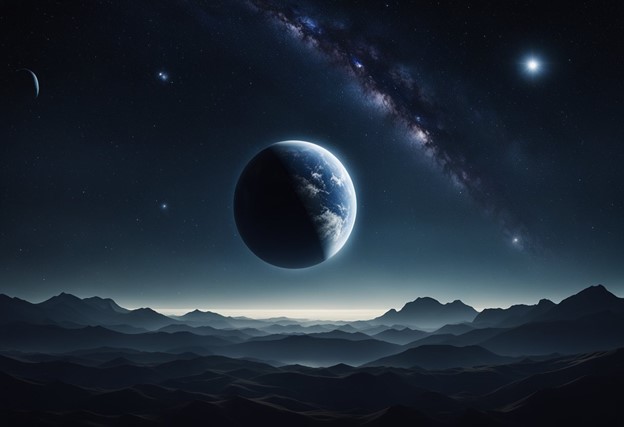
In the far far future, around 10^100 years from now, the universe will enter a period known as the “Dark Era“. During this era, all of the stars in the universe will have exhausted their fuel and will have died out, leaving the universe dark and cold.
One of the most widely accepted theories about the fate of the universe during the Dark Era is the “Heat Death Scenario”.
This theory suggests that as the universe continues to expand, it will eventually reach a state of maximum entropy. At this point, all of the energy in the universe will be evenly distributed, resulting in a state of complete disorder and randomness.
As a result of this state, the temperature of the universe will approach absolute zero, and all matter will have decayed into its constituent particles.
The universe will be dark, cold, and lifeless, with no sources of energy or light.
Everything will settle into a quiet equilibrium!
Final Thoughts

As we have explored, predicting the future of the universe over such long timescales is a intimidating task, and there are many unknowns and uncertainties.
However, based on current scientific understanding, it is clear that the universe will continue to evolve and change in ways that are difficult for us to comprehend.
Over the next billion, trillion, quadrillion, quintillion, nonillion and googol years, galaxies will continue to merge and form larger structures, while individual stars will burn out and die. Eventually, even the longest-lived stars will exhaust their fuel, leaving behind only cold, dark remnants.
Finally, the universe will become so diffuse that it is effectively empty, with only the occasional particle or photon.
Just remember that all that we’ve stated in this article are only predictions based on our current understanding of the universe and the laws of physics.
The scenario that will play out could be completely different. Perhaps in the next 1000 years, we will have a completely different view of the origin of the universe, and thus, the end of the universe will be entirely different.
Nonetheless, as everything comes to its end, so will the universe (probably).
Whether it happens in nonillion, googol, or googolplex years, we can’t know.
But it is certainly interesting to wonder and speculate.
Note: If you enjoyed this article you might also like:



























